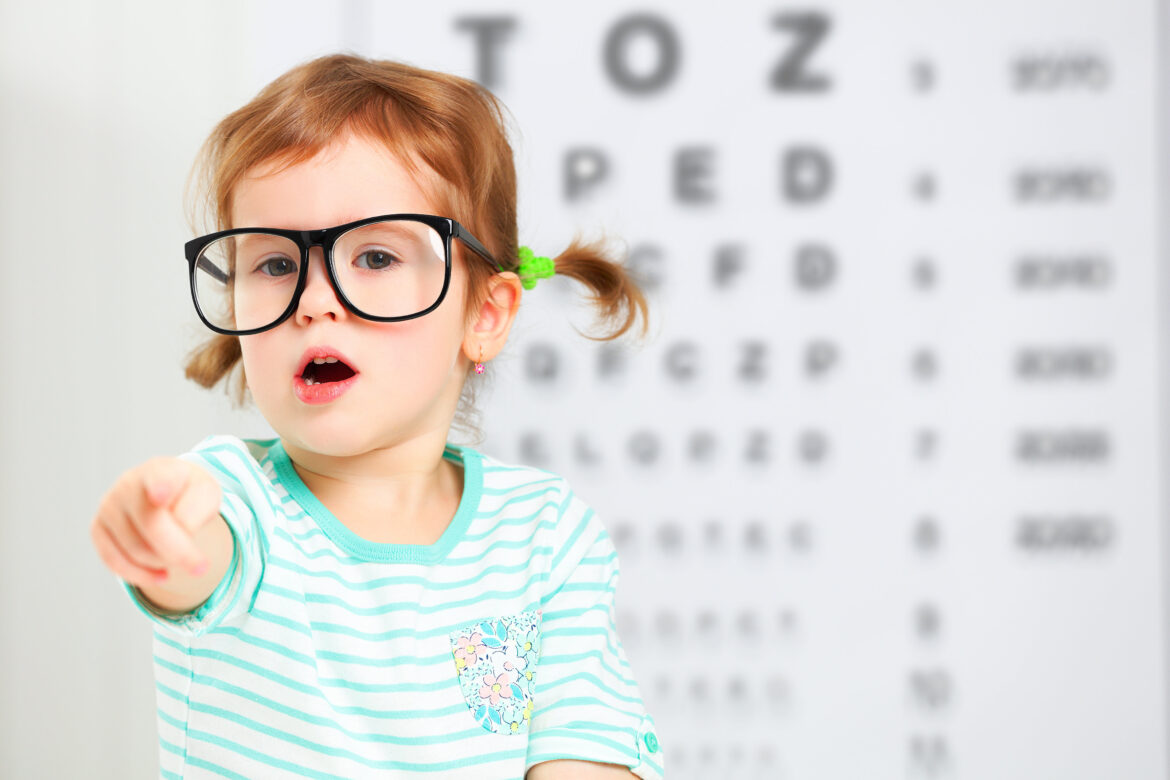Through our eyes, we not only express emotions and sometimes even the deepest secrets. But also, the eyes are one of the most magnificent ways to observe and learn about the world that surrounds us. Through the filter of colors and shapes, we get presented with images that get sent to the brain to be processed and help us interpret the world.
Although it might seem obvious, vision is a precious gift that should not be taken for granted. Nevertheless, 6.8% of children younger than 18 years in the U.S. have a diagnosed eye and vision condition, while the annual cost of children’s vision disorders is $10 billion, according to Prevent Blindness. Every June, Child Vision Awareness Month encourages people to ensure no child suffers from vision problems.
Nowadays, children get over-exposed to electronic devices like laptops and cellphones. But as if that was not enough, one of the many aspects of life impacted by the COVID-19 pandemic was how children had to switch from an in-person to an online setting, which significantly increased their screen time. As a result, according to the Journal of American Medical Association Ophthalmology, the rates of nearsightedness among young children were three times higher during the pandemic than in the last five years.
Another report from JAMA Ophthalmology report also concluded that “Home confinement during the COVID-19 pandemic appeared to be associated with a significant myopic shift for children aged 6 to 8 years according to 2020 school-based photoscreenings.” In addition, the report found a significant spike in nearsightedness among the youngest children in the study. From 2015 through 2019, researchers diagnosed 5.7 percent of six-year-olds with myopia. However, the findings in 2020 show 21.5 percent of six-year-olds are now myopic. Moreover, 26.2 percent of seven-year-olds and 37.2 percent of eight-year-olds also displayed poorer vision.
Some other common eye problems in children include lazy eyes, cross-eyed (found in four out of 100 children), droopy eyelids, and cataracts. The good news is that many of these issues are curable. Unfortunately, the not-so-great news is that some of those eye health issues can lead to blindness if not recognized and treated early.
This Child Vision Awareness Month, learn How to Maintain Children’s Healthy Eyes. Here six simple steps to help keep children’s healthy eyes, per EyeScreen.
1. Rest the Eyes
The American Academy of Pediatrics (AAP) recommends children reduce the time spent on electronic devices such as tablets, mobile phones, or handheld devices to no more than 1 or 2 hours per day. Taking regular breaks after every 30-40 minutes of reading, writing, or playing on the computer is also recommended
2. Protect Against the Sun
Use accessories to protect against the sun, such as sunglasses with ultraviolet (UV) protection or hats to shield your child from the sun’s damaging rays. For younger children, a hat or umbrella will be ideal to avoid them poking their eyes with sunglasses.
3. Increase Time Spent Outdoors
Studies have shown that outdoor activities delay myopia development, so incorporating outdoor activities with your child, like swimming or cycling, is beneficial. These outdoor activities promote physical fitness as well as improve hand-eye coordination.
4. Intake of Fruits, Vegetables, and Fatty Fish
Eating vegetables and fruits high in lutein and zeaxanthin have been found to protect eyes from free radical damage. These nutrients can be found in kale, collard greens, spinach, brussels sprout, egg yolks, corn, avocado, pistachios, goji berries, orange peppers, kiwi, grapes, orange juice, and zucchini. Eating fatty fish like salmon, herring, and tuna is also beneficial to the development of the eyes.
5. Regular Check-Ups
Vision screenings should be regularly conducted on children starting when they are newborns, during infancy (between six months to one year), and throughout their pre-school and school-going years. The earlier an eye problem is detected, the better and appropriate the treatment will be, ensuring successful vision correction and life-long benefits.
6. Encourage Healthy Eye Care Habits
Maintain healthy eye care habits, such as providing adequate lighting when your child is reading or playing. Also, kids should maintain a distance of about 30-40cm away when reading a book or about 50cm away from electronic devices. Getting at least eight hours of sleep each night is also crucial in preventing your child’s eyes from getting strained.
 Food
Food Farmers
Farmers Sustainable Living
Sustainable Living Living Planet
Living Planet News
News